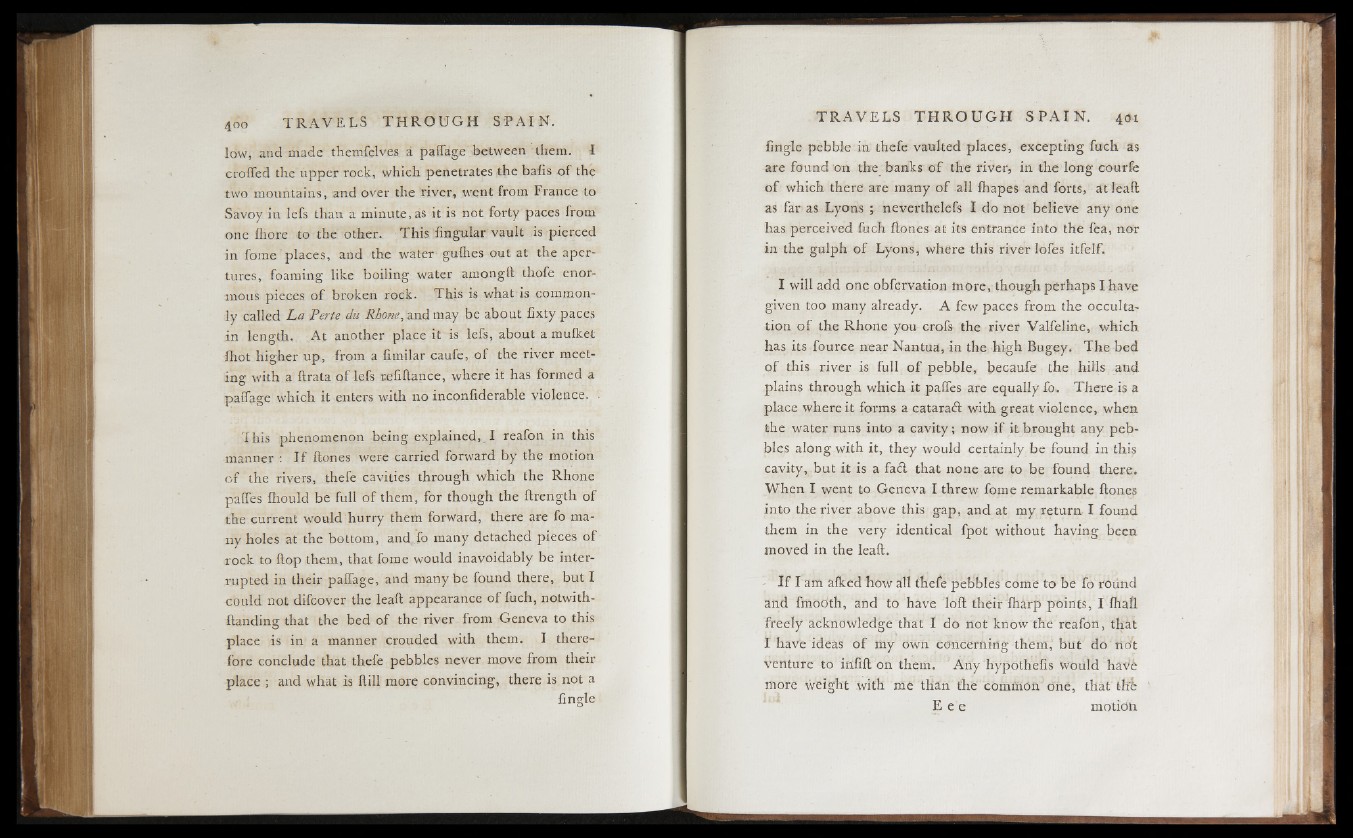
low, and made themfelves a paffage between them. I
crofted the upper rock, which penetrates the bafts o f the
two mountains, and over the river, went from France to
Savoy in lefs than a minute, as it is not forty paces from
one ihore to the other. This Angular vault is pierced
in fome places, and the water gullies out at the apertures,
foaming like boiling water amongft thofe enormous
pieces of broken rock. This is what is commonly
called La Perte du Rhone ¡and may be about fixty paces
in length. At another place it is lefs, about a muiket
fhot higher up, from a fimilar caufe, of the river meeting
with a ftrata o f lefs refiftance, where it has formed a
paffage which it enters with no inconfiderable violence. .
This phenomenon being explained, I reafon in this
manner : I f ftones were carried forward by the motion
o f the rivers, thefe cavities through which the Rhone
paffes ihould be full of them, for though the ftrength of
the current would hurry them forward, there are fo many
holes at the bottom, and fo many detached pieces of
rock to ftop them, that fome would inavoidably be interrupted
in their paffage, and many be found there, but I
could not difcover the leaft appearance of fuch, notwith-
ftanding that the bed of the river from Geneva to this
place is in a manner crouded with them. I therefore
conclude that thefe pebbles never move from their
place ; and what is ftill more convincing, there is not a
fingle
fingle pebble in thefe vaulted places, excepting fuch as
are found on the banks o f the fiver, in the long courfe
of which there are many o f all fhapes and forts, at leaft
as far as Lyons ; neverthelefs I do not believe any one
has perceived fuch ftones at its entrance into the fea, nor
in the gulph o f Lyons, where this river lofes itfelf.
I will add one obfervation more, though perhaps I have
given too many already. A few paces from the occulta-
tion o f the Rhone you crofs the river Valfeline, which
has its fource near Nantua, in the high Bugey. The bed
o f this river is full o f pebble, jpecaule the hills and
plains through which it paffes are equally fo. There is a
place where it forms a catarad with great violence, when
the water runs into a cavity; now if it brought any pebbles
along with it, they would certainly be found in this
cavity, .but it is a fad that none are to be found there.
When I went to Geneva I threw fome remarkable ftones
into the river above this gap, and at my return I found
them in the very identical fpot without having been
moved in the leaft.
I f I am afked how all thefe pebbles come to be fo round
and finotith, and to have loft their iharp points, I ihall
freely acknowledge that I do not know the reafoti, that
I have ideas o f my own concerning them,’ but do tio't
venture to inftft on them. Any hypothefis Would hav£
more Weight with me than the common one, that t-h&
E e e motion